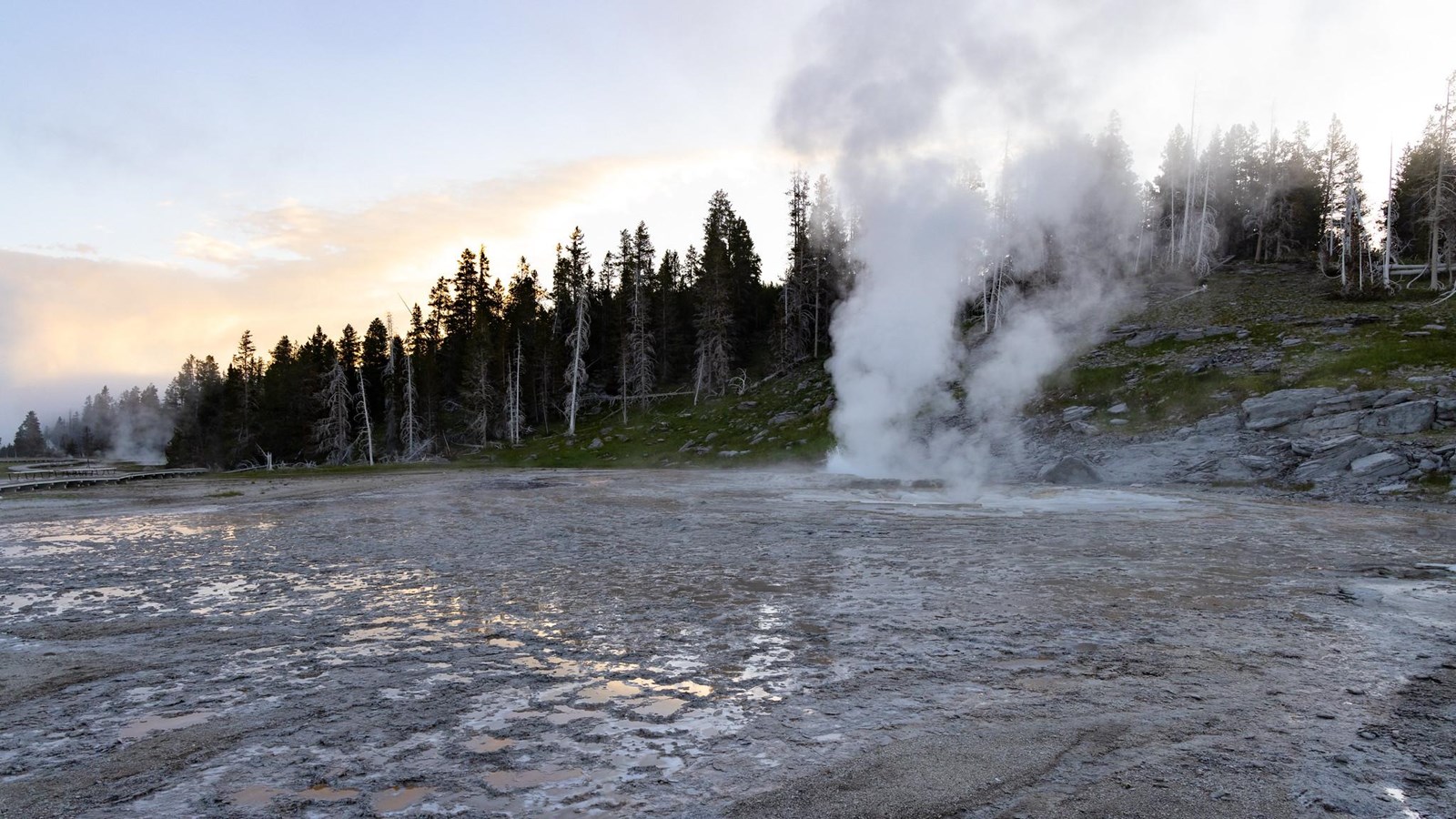Last updated: December 3, 2024
Place
Turban Geyser

NPS / Jacob W. Frank
Turban Geyser is a large, clear, blue pool surrounded by large, rounded deposits of geyserite along with geyserite rims forming terraced pools outside the main pool. Solidified sinter surrounds the outside the geyserite along with some orange thermophiles. The pool rim forms a sharp dropoff vertically into a deep clear pool. Turban Geyser is part of the Grand Complex and its activity is directly related to Grand Geyser's. Grand Geyser will only erupt once its rising water level coinciding with Turban Geyser's eruptions reaches an overflow, where both then erupt together.
Turban Geyser has an average temperate of 184°F (84.5°C), an average pH of 9, and an average conductivity of 2112 uS/cm.
Geysers
Geysers have constrictions in their plumbing systems that prevent water from moving freely to the surface where heat would escape. Water beneath the constrictions creates a buildup of steam. Eventually the steam pushes water past the constrictions and the geyser erupts.
Upper Geyser Basin
The majority of world’s active geysers are in the Upper Geyser Basin, including Old Faithful. Only four other places in the world have large concentrations of hydrothermal features: Russia (Kamchatka), Chile, New Zealand, and Iceland.
The heat for the hydrothermal features comes from Yellowstone’s volcano. Molten rock or magma may be as close as 3-8 miles (5-13 km) underground. Rain and snow supply water that seeps down several thousand feet (more than a kilometer) below the surface where it is heated.
Underground cracks form a natural plumbing system. Hot water rises through the plumbing to produce hot springs and geysers.
Use Caution in Hydrothermal Areas
- Stay on boardwalks and designated trails.
- Hydrothermal water can severely burn you.
- Never run, push, or shove.
- Supervise children at all times.
- Do not scratch hydrothermal mats.
You are responsible for your safety.
Think safety, act safely. Yellowstone is a dangerous place.
